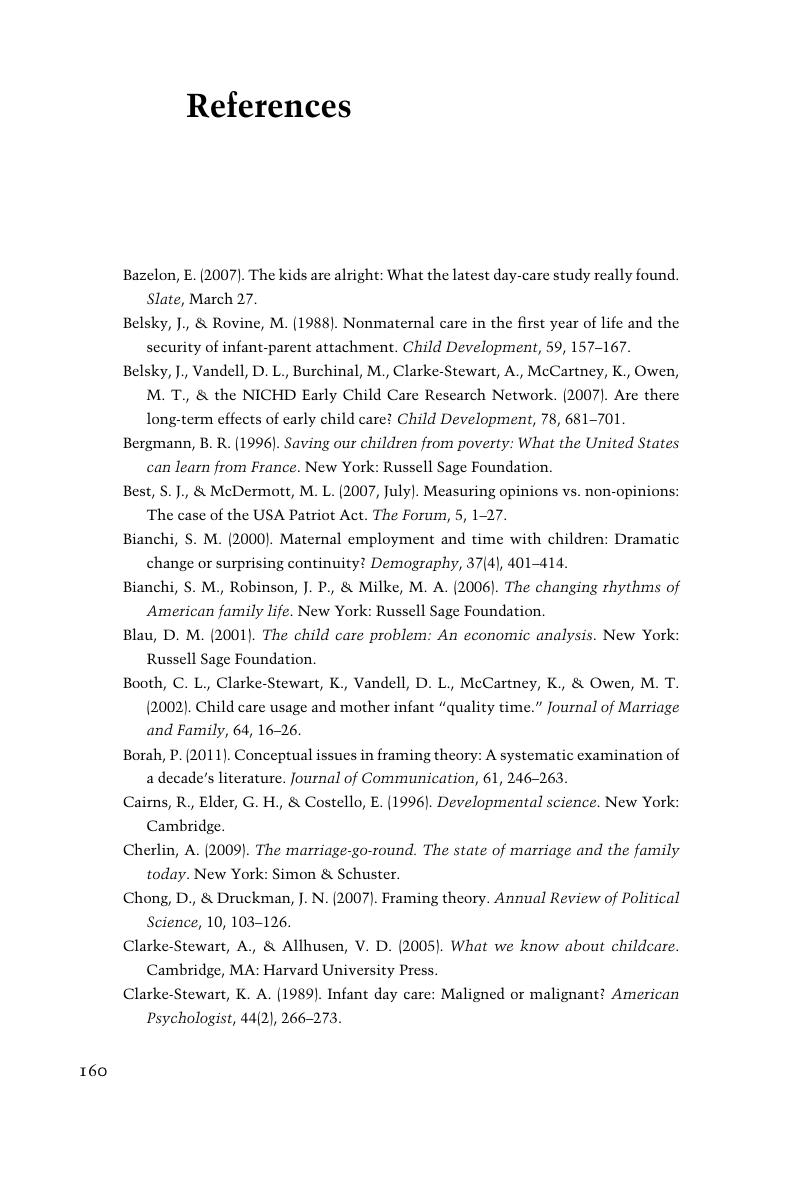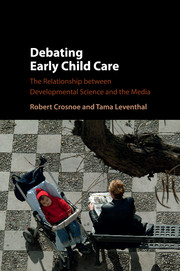Book contents
- Debating Early Child Care
- Debating Early Child Care
- Copyright page
- Dedication
- Contents
- Figures and tables
- Book part
- 1 The child care wars
- 2 Translating science for public consumption
- 3 Media coverage of early child care research
- 4 Mothers, children, and messages
- 5 Gaining perspective on early child care research in the media
- 6 Lessons learned for scientists, journalists, and parents
- 7 Moving forward with developmental science in the media
- References
- Index
- References
References
Published online by Cambridge University Press: 05 March 2016
- Debating Early Child Care
- Debating Early Child Care
- Copyright page
- Dedication
- Contents
- Figures and tables
- Book part
- 1 The child care wars
- 2 Translating science for public consumption
- 3 Media coverage of early child care research
- 4 Mothers, children, and messages
- 5 Gaining perspective on early child care research in the media
- 6 Lessons learned for scientists, journalists, and parents
- 7 Moving forward with developmental science in the media
- References
- Index
- References
Summary

- Type
- Chapter
- Information
- Debating Early Child CareThe Relationship between Developmental Science and the Media, pp. 160 - 165Publisher: Cambridge University PressPrint publication year: 2016



